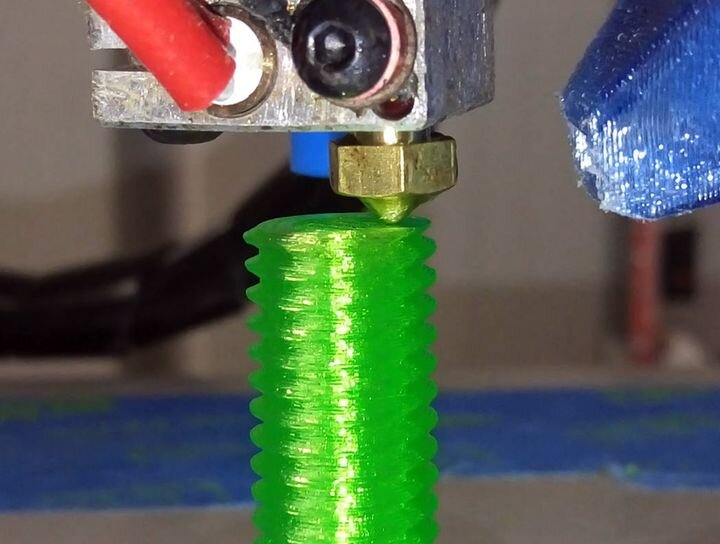![3D Printing: Print Quality & Printer Calibration: Troubleshooting Print Quality And Calibrating Your Printer [Source: Amazon]](https://fabbaloo.com/wp-content/uploads/2020/05/image-asset_img_5eb08c119a227.jpg) 3D Printing: Print Quality & Printer Calibration: Troubleshooting Print Quality And Calibrating Your Printer [Source: Amazon]
3D Printing: Print Quality & Printer Calibration: Troubleshooting Print Quality And Calibrating Your Printer [Source: Amazon]
This week’s selection is “3D Printing: Print Quality & Printer Calibration: Troubleshooting Print Quality And Calibrating Your Printer” by Luke Assad.
I recall the first time I turned on a 3D printer many years ago, after having spent many hours building it from wires, nuts and bolts. It was a momentous occasion, or at least until the first 3D print happened.
In fact, my first 3D print was a total mess. In those days desktop 3D printers didn’t really have any proper calibration out-of-the-box, as you literally had to build them yourself. The resulting machines were all slightly different mechanically, thermally, and in other ways, meaning it was near impossible to state a “good” set of 3D print parameters.
After having spent hours building the machine, I then spent a couple of weeks learning the necessary 3D print parameters, along with the terminology, to understand what was really happening. Then, after many days, I was able to 3D print a simple cube — hurrah!
That process of learning by trial and error was, in retrospect, torture. Today’s 3D printers are far better in terms of usability, and many simply work immediately out of the box. I’ve had successful prints complete literally 20 minutes after opening the box.
But there are still challenges, albeit at a different level of complexity. While all machines are more or less calibrated and can produce prints, are they in fact optimal?
What happens if you try a different and more challenging geometry for a 3D print? What happens if you use a different supplier’s material? What are the subtle changes you must account for in your 3D print parameters?
That’s what this book is about: learning those parameters so that regardless of the machine or materials, the reader will become a competent 3D printer operator that can observe how a 3D print proceeds and then make intelligent decisions on how to tweak the 3D print parameters to achieve even greater quality on the results.
The author explains:
“3D Printing can be quite daunting for new comers and young folks that would love to get their foot in the door of the 3D printing world, with this E-Book the many years of research and trial & error that has gone into the love for 3D printing that we share has been compressed down into a single E-Book covering all aspects of calibrating the Prusa style printers and then many aspects of bad print quality are covered in depth giving a much clearer picture of what needs to be done when you are having a particular issue.”
The book begins with a basic explanation of how a filament-based 3D printer is intended to operate, followed by a chapter on basic calibrations, such as bed levelling, adjusting nozzle height, etc.
Another section deals with troubleshooting, where various effects seen in a completed 3D print can be recognized and adjusted for in subsequent 3D prints.
This book is intended for those new to 3D printing, as experienced operators would likely be aware of most, if not all, of the issues described. However, for someone receiving a basic 3D printer as a gift, this book would be an excellent companion gift that could make the difference between frustration and success. One more thing: it’s very inexpensive, too.
Via Amazon

